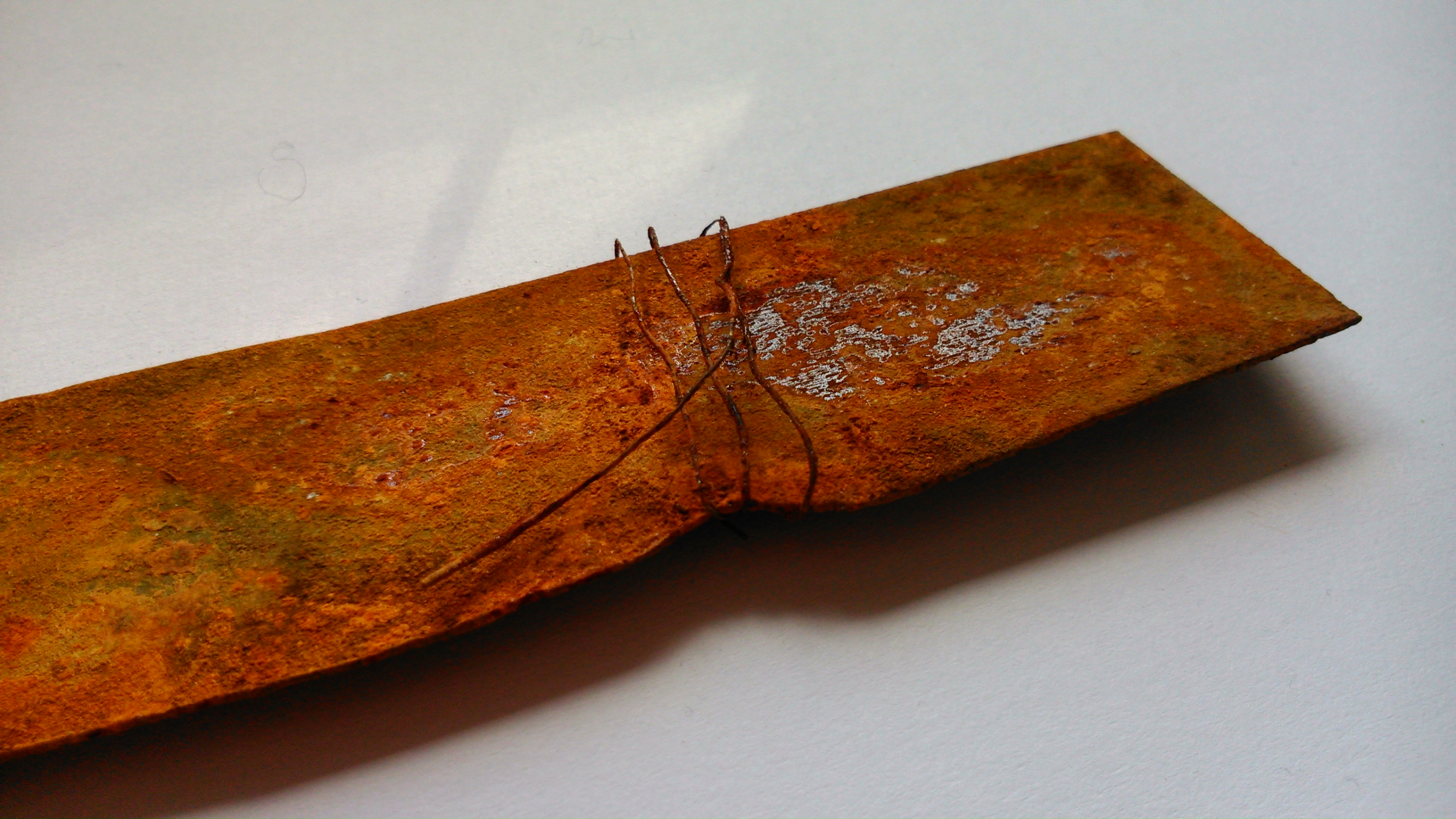|
Soil Morphology
Soil morphology is the branch of soil science dedicated to the technical description of soil, particularly Physical properties of soil, physical properties including texture, color, structure, and consistence. Morphological evaluations of soil are typically performed in the field on a soil profile containing multiple Soil horizon, horizons. Along with soil formation and soil classification, soil morphology is considered part of pedology, one of the central disciplines of soil science. Background Since the Neolithic Revolution, origin of agriculture, humans have understood that soils contain different properties which affect their ability to grow crops. However, soil science did not become its own scientific discipline until the 19th century, and even then early soil scientists were broadly grouped as either "agro-chemists" or "agro-geologists" due to the enduring strong ties of soil to agriculture. These agro-geologists examined soils in natural settings and were the first to sc ... [...More Info...] [...Related Items...] OR: [Wikipedia] [Google] [Baidu] |
Munsell Color System
The Munsell color system is a color space that specifies colors based on three properties of color: hue (basic color), value (lightness), and colorfulness, chroma (color intensity). It was created by Albert Henry Munsell, Albert H. Munsell in the first decade of the 20th century and adopted by the United States Department of Agriculture (USDA) as the official color system for soil research in the 1930s. Several earlier color order systems in the field of colorimetry had placed colors into a three-dimensional color solid of one form or another, but Munsell was the first to separate hue, value, and chroma into Color difference#Tolerance, perceptually uniform and independent dimensions, and he was the first to illustrate the colors systematically in three-dimensional space. Munsell's system, particularly the later renotations, is based on rigorous measurements of human subjects' color vision, visual responses to color, putting it on a firm experimental scientific basis. Because of th ... [...More Info...] [...Related Items...] OR: [Wikipedia] [Google] [Baidu] |
Soil Triangle
Soil texture is a classification instrument used both in the field and laboratory to determine soil classes based on their physical texture. Soil texture can be determined using qualitative methods such as texture by feel, and quantitative methods such as the hydrometer method based on Stokes' law. Soil texture has agricultural applications such as determining crop suitability and to predict the response of the soil to environmental and management conditions such as drought or calcium (lime) requirements. Soil texture focuses on the particles that are less than two millimeters in diameter which include sand, silt, and clay. The USDA soil taxonomy and WRB soil classification systems use 12 textural classes whereas the UK-ADAS system uses 11. These classifications are based on the percentages of sand, silt, and clay in the soil. History The first classification, the international system, was first proposed by Albert Atterberg in 1905 and was based on his studies in southern Swed ... [...More Info...] [...Related Items...] OR: [Wikipedia] [Google] [Baidu] |
Laser Diffraction Analysis
Laser diffraction analysis, also known as laser diffraction spectroscopy, is a technology that utilizes diffraction patterns of a laser beam passed through any object ranging from nanometers to millimeters in size to quickly measure geometrical dimensions of a particle. This particle size analysis process does not depend on volumetric flow rate, the amount of particles that passes through a surface over time. Fraunhofer vs. Mie Theory Laser diffraction analysis is originally based on the Fraunhofer diffraction theory, stating that the intensity of light scattered by a particle is directly proportional to the particle size. The angle of the laser beam and particle size have an inversely proportional relationship, where the laser beam angle increases as particle size decreases and vice versa. The Mie scattering model, or Mie theory, is used as alternative to the Fraunhofer theory since the 1990s. Commercial laser diffraction analyzers leave to the user the choice of using either ... [...More Info...] [...Related Items...] OR: [Wikipedia] [Google] [Baidu] |
Hydrometer
A hydrometer or lactometer is an instrument used for measuring density or relative density of liquids based on the concept of buoyancy. They are typically Calibration, calibrated and Graduation (instrument), graduated with one or more scales such as specific gravity. A hydrometer usually consists of a sealed hollow glass tube with a wider bottom portion for buoyancy, a ballast such as lead or Mercury (element), mercury for stability, and a narrow stem with graduations for measuring. The liquid to test is poured into a tall container, often a graduated cylinder, and the hydrometer is gently lowered into the liquid until it floats freely. The point at which the surface of the liquid touches the stem of the hydrometer correlates to relative density. Hydrometers can contain any number of scales along the stem corresponding to properties correlating to the density. Hydrometers are calibrated for different uses, such as a lactometer for measuring the density (creaminess) of milk, a sa ... [...More Info...] [...Related Items...] OR: [Wikipedia] [Google] [Baidu] |
Sieving
A sieve (), fine mesh strainer, or sift is a tool used for separating wanted elements from unwanted material or for controlling the particle size distribution of a sample, using a screen such as a woven mesh or net or perforated sheet material. The word ''sift'' derives from ''sieve''. In cooking, a sifter is used to separate and break up clumps in dry ingredients such as flour, as well as to aerate and combine them. A strainer (see colander), meanwhile, is a form of sieve used to separate suspended solids from a liquid by filtration. Sieving Sieving is a simple technique for separating particles of different sizes. A sieve such as used for sifting flour has very small holes. Coarse particles are separated or broken up by grinding against one another and the screen openings. Depending upon the types of particles to be separated, sieves with different types of holes are used. Sieves are also used to separate stones from sand. Sieving plays an important role in food industr ... [...More Info...] [...Related Items...] OR: [Wikipedia] [Google] [Baidu] |
Particle Size Analysis
Particle size analysis, particle size measurement, or simply particle sizing, is the collective name of the technical procedures, or laboratory techniques which determines the size range, and/or the average, or mean size of the particles in a powder or liquid sample. Particle size analysis is part of particle science, and it is generally carried out in particle technology laboratories. The particle size measurement is typically achieved by means of devices, called Particle Size Analyzers (PSA), which are based on different technologies, such as high definition image processing, analysis of Brownian motion, gravitational settling of the particle and light scattering (Rayleigh and Mie scattering) of the particles. The particle size can have considerable importance in a number of industries including the chemical, food, mining, forestry, agriculture, cosmetics, pharmaceutical, energy, and aggregate industries. Particle size analysis based on light scattering Particle size ... [...More Info...] [...Related Items...] OR: [Wikipedia] [Google] [Baidu] |
Carbonate
A carbonate is a salt of carbonic acid, (), characterized by the presence of the carbonate ion, a polyatomic ion with the formula . The word "carbonate" may also refer to a carbonate ester, an organic compound containing the carbonate group . The term is also used as a verb, to describe carbonation: the process of raising the concentrations of carbonate and bicarbonate ions in water to produce carbonated water and other carbonated beverageseither by the addition of carbon dioxide gas under pressure or by dissolving carbonate or bicarbonate salts into the water. In geology and mineralogy, the term "carbonate" can refer both to carbonate minerals and carbonate rock (which is made of chiefly carbonate minerals), and both are dominated by the carbonate ion, . Carbonate minerals are extremely varied and ubiquitous in chemically precipitated sedimentary rock. The most common are calcite or calcium carbonate, , the chief constituent of limestone (as well as the main component of ... [...More Info...] [...Related Items...] OR: [Wikipedia] [Google] [Baidu] |
Aluminosilicate
Aluminosilicate refers to materials containing anionic Si-O-Al linkages. Commonly, the associate cations are sodium (Na+), potassium (K+) and protons (H+). Such materials occur as minerals, coal combustion products and as synthetic materials, often in the form of zeolites. Both synthetic and natural aluminosilicates are of technical significance as structural materials, catalysts, and reagents. Important representatives Feldspar is a common tectosilicate aluminosilicate mineral made of potassium, sodium, and calcium cations surrounded by a negatively charged network of silicon, aluminium and oxygen atoms. Many aluminosilicates are synthesized by reactions of silicates, aluminates, and other compounds. They have the general formula where M+ is usually H+ and Na+. The Si/Al ratio is variable, which provides a means to tune the properties. Many of these materials are porous and exhibit properties of industrial value. Naturally occurring microporous, hydrous aluminosilicate m ... [...More Info...] [...Related Items...] OR: [Wikipedia] [Google] [Baidu] |
Iron Oxide
An iron oxide is a chemical compound composed of iron and oxygen. Several iron oxides are recognized. Often they are non-stoichiometric. Ferric oxyhydroxides are a related class of compounds, perhaps the best known of which is rust. Iron oxides and oxyhydroxides are widespread in nature and play an important role in many geological and biological processes. They are used as iron ores, pigments, catalysts, and in thermite, and occur in hemoglobin. Iron oxides are inexpensive and durable pigments in paints, coatings and colored concretes. Colors commonly available are in the " earthy" end of the yellow/orange/red/brown/black range. When used as a food coloring, it has E number E172. Stoichiometries Iron oxides feature as ferrous ( Fe(II)) or ferric ( Fe(III)) or both. They adopt octahedral or tetrahedral coordination geometry. Only a few oxides are significant at the earth's surface, particularly wüstite, magnetite, and hematite. * Oxides of FeII ** FeO: ir ... [...More Info...] [...Related Items...] OR: [Wikipedia] [Google] [Baidu] |
Soil Organic Matter
Soil organic matter (SOM) is the organic matter component of soil, consisting of plant and animal detritus at various stages of decomposition, cells and tissues of soil microbes, and substances that soil microbes synthesize. SOM provides numerous benefits to soil's physical and chemical properties and its capacity to provide regulatory ecosystem services. SOM is especially critical for soil functions and quality. The benefits of SOM result from several complex, interactive, edaphic factors; a non-exhaustive list of these benefits to soil function includes improvement of soil structure, aggregation, water retention, soil biodiversity, absorption and retention of pollutants, buffering capacity, and the cycling and storage of plant nutrients. SOM increases soil fertility by providing cation exchange sites and being a reserve of plant nutrients, especially nitrogen (N), phosphorus (P), and sulfur (S), along with micronutrients, which the mineralization of SOM slowly rele ... [...More Info...] [...Related Items...] OR: [Wikipedia] [Google] [Baidu] |
Global Soils Map USDA
Global may refer to: General *Globe, a spherical model of celestial bodies *Earth, the third planet from the Sun Entertainment * ''Global'' (Paul van Dyk album), 2003 * ''Global'' (Bunji Garlin album), 2007 * ''Global'' (Humanoid album), 1989 * ''Global'' (Todd Rundgren album), 2015 * Bruno J. Global, a character in the anime series ''The Super Dimension Fortress Marcoss'' Companies and brands Television * Global Television Network, in Canada ** Canwest Global, former parent company of Global Television Network ** Global BC, on-air brand of CHAN-TV, a television station in Vancouver, British Columbia, Canada ** Global Calgary ** Global Edmonton ** Global Halifax ** Global Montreal ** Global News, the news division of the Global Television Network ** Global Okanagan, on-air brand of CHBC-TV, a television station in Kelowna, British Columbia, Canada ** Global Toronto, a television station in Toronto * Global TV (Venezuela), a regional channel in Venezuela * Global TV, t ... [...More Info...] [...Related Items...] OR: [Wikipedia] [Google] [Baidu] |







